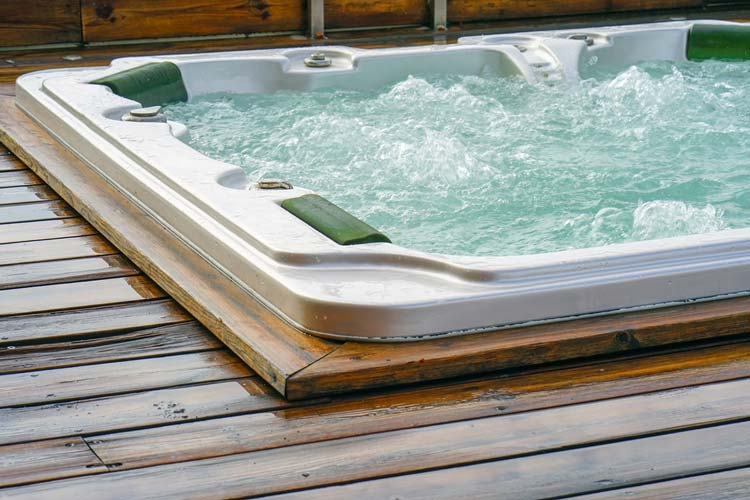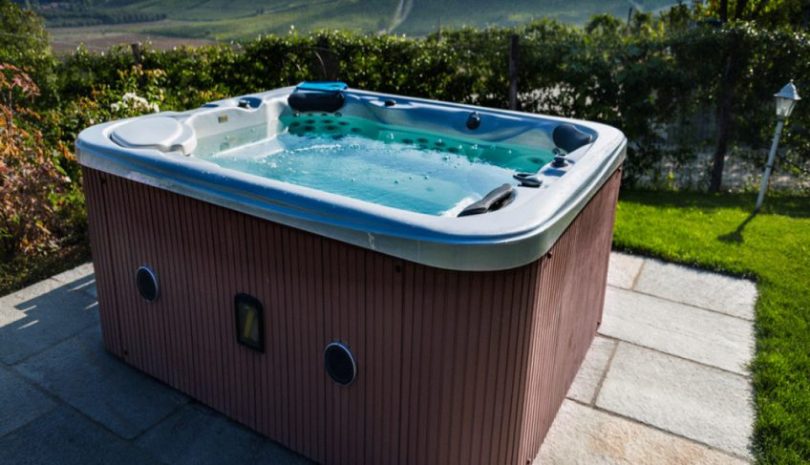A hot tub has many health benefits. It is available in various models yet with a similar working mechanism. After setting up a hot tub in your home, you might want to understand how it works. If you want to know more about your hot tub, here is a breakdown of its major components.
A hot tub has many health benefits. Even theough there are numerous models available, most hot tubs work in a similar mechanism. To use your hot tub up to it’s highest capabilities, you’ll need to know about the different parts of a hot tub and how does a hot tub work. That’s our focus today.
This article will try to provide a detailed breakdown of the different parts of a hot tub. We’ll also try to explain how these parts work seamlesly togather. If you are interested to get an answer for the question “how does a hot tub work”, you are in the right place. Let’s dive right in.
It is available in various models yet with a similar working mechanism. After setting up a hot tub in your home, you might want to understand how it works. If you want to know more about your hot tub, here is a breakdown of its major components.
How Does a Hot Tub Work – All Parts Function Explain

Here is a short description of the function s of each part of a hot tub.
1. Shell
The shell provides outlets for the massage jets. Both the water and the bather are in the shell. They can accommodate two to three persons or more. In most cases, shells have built-in seats to enhance your comfort.
The shell can withstand harsh weather, chemicals, and weight of the bathers. It is made of hard plastic or acrylic material to enhance its durability. Besides, it comes with fiberglass or polyurethane foam to improve weight handling capacity.
2. Cabinet
It is impossible to discuss how inflatable hot tubs work without the cabinet. It serves as the foundation structure of the hot tub. It also houses the shell and other fittings like heaters and pumps. The cabinet comes with a door that helps you to access these hidden fittings. Most of the cabinets are made from wood or polymers because of their ease of maintenance.
3. Electrical Resistance Heaters
Electrical heaters will warm the water in the tub to the temperature you desire. So how does the heater work? The water in the pipes flows through the heater element which is in the cabinet. The water is heated as it passes through the heater coil. The heater is connected to the main power supply were it converts electrical energy to heat.
You should only power the heater when there is water in the shell. This is to prevent the occurrence of dry fire or other damages.
4. Pumps
The water is circulated in the hot tub by pumps. It’s the pump that controls the filtration and jet action. Most inflatable hot tubs use two pumps each for controlling the filter and jets. Yet, a hot tub with a single pump is programmed to operate at two speeds namely high and low. The high-speed pump controls the jets while the low-speed will operate the filter.
The time clock and thermostat help to control the pump’s speed when it operates the filter. There are some switches that allow you to set your pump’s speed. The pump takes the filtered water and sends it to the heating coil. It usually takes between 2 to 4 hours for the completion of the filtration process. A pump with both thermostat and timeclock control systems provides better filtration.
Besides, pumps that run on 120 VAC supply provide better filtering than the ones that run at 240 VAC. This is because of the difference in the speed of operation of these pumps. Most 240 VAC pumps will provide high-speed heating but inadequate filtering. As a rule of thumb, the slower the heating speed, the better the filtration process.
But, high-speed pumps are more efficient in jet action. They work by creating high-pressure water streams through the jets to the hot tub. You can easily estimate the number of pumps in the unit by the size of the hot tub. The air button is for controlling the speed of the pump.
5. Blowers
In most older hot tubs, air blowers help to create more bubbles across the surface of the water. You can combine these blowers with air venturis which serve as an air passage for the jet’s supply. The blowers are also controlled by the air button.
6. Hydrojets
Air is passed to the jets during the pump action through the venturis. The mixture of air and water results in bubbles which are helpful in body massage. The hydrojets in an inflatable hot tub work by drawing air into the jet nozzles through the venturi. This in turn, results in the flickering bubbles. The connection of the different jets to the valves allow them to be operated either simultaneously or independently.
7. Topside Control
The topside control is located both inside and outside the hot tub. So, how well do they work? Here, it allows you to regulate the temperature of the water before or after entering the tub. The acceptable maximum water temperature in any hot tub is 104°F. Besides the temperature should not exceed 98°F if you’ll be staying in the hot tub for long. The air buttons on this panel allow you to control the hot tub’s pumps, blowers, and lights.
8. Sanitation System
So, how does a hot tub work to maintain proper sanitation? Besides the chemical you add each day, the condition of the water is kept on check via the sanitation system. Its role is to ensure that the water is clear, safe and clean for you. The same goes for inflatable hot tubs.
The filter system is at the top of the tub. It can accommodate more than two filters at a time. You can replace or clean the filter if you notice some changes in the water. In most cases, a filter that does the greatest filtering has more need for cleaning or replacement. For example, filters that are connected to a low-speed pump will look dirtier than others.
9. Ozonator
The Ozonator works with special lights to convert oxygen to ozone. Ozone is formed when a stream of air is passed over a UV lamp or corona discharge chip. So, how does the ozonator create the airflow?
Here, a small tube called venturi is placed on the ozonator to create the airflow. The action of the pump produces a suction in the venturi that allows the flow of oxygen into the ozonator. This oxygen is converted into ozone and is passed into the water.
The ozone helps to improve the quality of the water by reducing its organic materials. But ozone does not replace chemical sanitizers. The ozonator is switched on once the pump starts operating.
10. Lights
The lights help to improve your comfort in the hot tub at night. This is by illuminating the controls and the tub environment. Besides, the lights enhance the appearance of the hot tub at night, making it more attractive. Some of the lights are white while others are a combination of diverse colors. You can set the lights to change to different colors in a regular manner. The lights are controlled on the panel at the top of the hot tub.
That’s it for today. Hope you enjoyed knowing about your hot tub. This knowledge will not only help you get the best out of your tub, but it also will allow to maintain the peak condition for your hot tub for a long time.
Maintaining a hot tub regularly is a tough responsibility. However, the challenge become a little easier if you can answer our today’s question: how does a hot tub work. If you have any further question regarding hot tubs, feel free to ask in the comment section below. Thanks for reading this far and happy soaking to you.








Leave a Comment